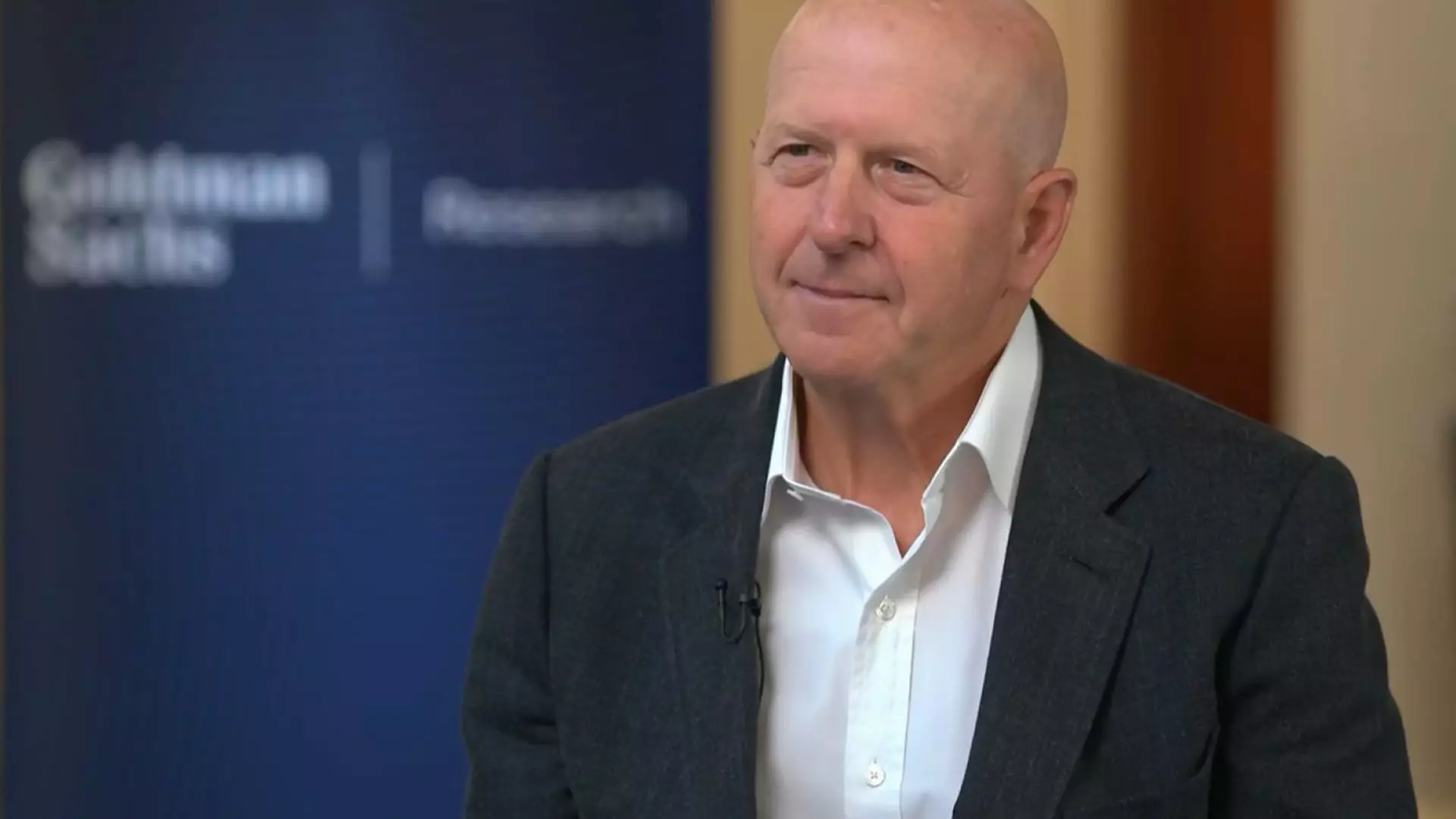Goldman Sachs’ quarterly results can be likened to a lighthouse piercing through a foggy storm; while it appears to shine bright, the surrounding chaos inherently complicates the situation. The renowned investment bank soared past analysts’ expectations, posting earnings of $14.12 per share compared to the $12.35 forecast. Its revenue of $15.06 billion, also above the projected $14.81 billion, asserted Goldman’s resilience in a tumultuous trading environment. However, this rise in performance raises critical questions about sustainability and the underlying health of the financial sector amidst signs of broader economic strain.
The noteworthy 15% profit increase to $4.74 billion reveals a complex tableau of success, juxtaposed against a mere 6% rise in revenue. Yes, Goldman boasts impressive equities trading numbers—an almost mesmerizing 27% surge in revenue to $4.19 billion. But one has to scrutinize whether this surge is an authentic reflection of growth or simply a byproduct of the current market volatility spurred by geopolitical tensions. What appears like a victory could easily mask frail foundations beneath.
Uneasy Foundations: The Dark Side of Success
For every silver lining, there’s a looming cloud in Goldman’s latest financial report. Predominantly, the firm’s global banking and markets division did exhibit a strong 10% increase, yet other divisions hinted at underlying fragility. The disheartening performance in fixed income—only a 2% rise, missing projections considerably—underscores a worrying trend. What’s more alarming is the 8% drop in investment banking fees, which reflects a cooling interest or ability to foster new deals and mergers. Could this be an early sign of a broader banking malaise?
It’s compelling to consider how the powerful trading results can overshadow these distressing trends. If one were to analyze this success further, it becomes clear that the booming revenues from equities trading are essentially riding a rollercoaster fueled by uncertainty rather than solid growth drivers. Goldman’s CEO, David Solomon, alluded to the tumultuous environment being exacerbated by President Trump’s escalating trade wars, suggesting that while current earnings are uplifts, they might not be sustainable as the global economy reels from these shocks.
The Paradox of ‘Success’ in the Face of Instability
Trading revenue figures reflective of extraordinary performance amidst chaos lead investors to grapple with the concept of success underpinned by instability. Solomon’s statement about “a markedly different operating environment” does not merely highlight the struggles of the current marketplace; it reverberates with the notion that the financial industry is adjusting to a new reality. This new reality may not be one that fosters long-term stability but rather one in which firms like Goldman must swiftly adapt to looming uncertainties—a cycle that could wear down the very essence of their operational efficacy.
Additionally, the diminished revenues from the asset and wealth management division paint a rather less-than-rosy picture. Falling revenues by 3% from earlier figures signals that even starlight can dim. Fundamental investments are underperforming, raising valid concerns about the bank’s strategic direction and ability to weather future fluctuations in the market. These are the indicators that beg for more than just a gloss of impressive quarterly earnings.
Market Reactions and Future Implications
In response to Goldman Sachs’ quarterly report, the bank’s shares did surmount a 3% increase during pre-market trading. Yet, the fact that Goldman’s stock has plummeted by 14% this year leads to an unsettling implication—what might this mean for investor confidence moving forward? The stock market is a fickle beast, and while today’s figures can surge, tomorrow’s unpredictable economic landscape looms large.
The sentiment from Wall Street will likely hinge on Solomon’s discussions with corporate clients as they navigate through these tumultuous waters. Rivals such as JPMorgan Chase and Morgan Stanley have, intriguingly, shown how trading revenues can blossom amidst the chaos. Despite Goldman’s respectable figures, questions about its capacity to evolve and sustain competitive performance will remain a critical concern as investors ponder not just on the earnings report, but what lies beneath the glossy surface.
Navigating this balance of potential and peril will define Goldman’s trajectory amid a market rife with uncertainty. It is within this juxtaposition of success and shadow that true resilience—or vulnerability—will be revealed.

Leave a Reply